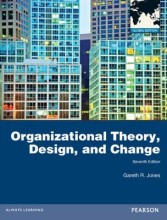Transaction cost theory
6 important questions on Transaction cost theory
What is the transaction cost theory?
There are three different sources to transaction costs that results from a combination of human and environmental factors:
- Environmental uncertainty and bounded rationality
- Opportunism and small numbers
- Risk and specific assets
Describe the different sources of transaction costs.
- Environmental uncertainty and bounded rationality
- People have limited ability to understand the environment surrounding them -> Therefore bounded rationality
- The higher uncertainty in the environment, the more difficult it is to manage a transaction.
- Opportunism and small numbers
- When people or organisations cheat forces or stakeholders in the environment.
- The small the number of suppliers, the greater the chance for opportunism -> Organisations at risk spend more money to protect themselves (High transaction costs)
- Risk and specific assets
- Investments for a single relationship that cannot be used later to other firms
- Risk of being trapped/ blackmail
There is a connection between the transaction costs and the inter organisational linkage mechanism. What three conditions exist when transaction costs or low and what three conditions when they are high?
- Trade of non-specific goods and services
- Low uncertainty
- Many possible trade partners
- Trade of specific goods and services
- Higher uncertainty
- Low possible number of trade partners
- Higher grades + faster learning
- Never study anything twice
- 100% sure, 100% understanding
What are bureaucratic costs?
Why is the transaction cost theory a good way to choose an organisation's interorganisational strategy as opposed to the resource dependence theory?
Organisations are able to make better predictions based on the costs with different linkage mechanisms and thereby reduce uncertainty.
The three strategies mentioned to control interdependencies in an organisation are:
- Keiratsu
- Franchising
- Outsourcing
Describe the the organisational strategies.
- Keiratsu
- Formal linkage without incurring costs
- Avoids uncertainty and opportunism.
- Ex. Toyota avoids costs but has a say in its supplier's businesses.
- Franchising
- Symbiotic interdependence
- The franchisees own the business to avoid bureaucratic cost in the main concern.
- Outsourcing
- When no extra value is added through the costs of internalised production/ Bureaucratic costs -> Outsourcing
The question on the page originate from the summary of the following study material:
- A unique study and practice tool
- Never study anything twice again
- Get the grades you hope for
- 100% sure, 100% understanding






























